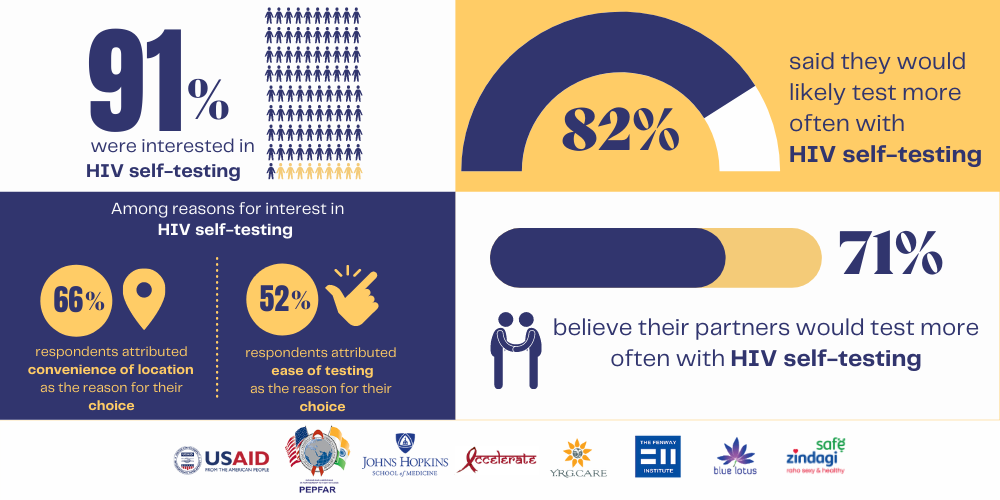HIV self-testing is critical in containment and early detection of the disease.
In recent years HIV prevalence in the 15-49 age group has stabilized and has even seen a decline since the epidemic’s peak in 2020. According to data from UNAIDS, India has an estimated population of 2,300,000 adults and children living with HIV. India has successfully reached out to HIV prevalence target groups to address the endemic with different HIV services. The HIV self-testing tool is one such key service that will help accelerate India’s goal towards eliminating AIDS by 2030.
[box type=”info” align=”” class=”” width=””]HIV self-testing is critical in containment and early detection of the disease. HIV self-testing is a safe, accurate and effective way to screen oneself for HIV in the comfort of home or any other location.[/box]
In 2016, the World Health Organization recommended HIV self-testing be offered as a complementary approach to existing HIV testing services. HIV self-testing kits include easy-to-follow instructions and can be completed in a location of one’s choosing, either alone or with a trusted individual. Project Accelerate conducted an anonymous online survey to understand the knowledge and perceptions that individuals have with regards to HIV self-testing. This survey was conducted between December 17, 2020 and December 30, 2020.
The survey found that 91% of respondents were interested in HIV self-testing. Among reasons for interest in self-testing, convenience of location and ease of testing ranked the highest with 66% and 52% respectively. Nearly 82% people would likely test more often with HIV self-testing, while 71% respondents believe their partners would test more often with HIV self-testing. When HIV negative respondents were questioned on the likelihood of testing more frequently, 82% said they were likely to test while only 4% said they were unlikely to self-test. Around 71% of HIV negative respondents said there was a likelihood among sexual partners to self-test.
It is important to note that although there is no cure for HIV, people infected with the virus can be treated with medication that prevents the virus from multiplying within the body through anti-retroviral therapy. This means HIV infection is no longer a death sentence. ART supports those living with HIV to have long and healthy lives.
[author title=”Dr. Jalpa Thakker, Director – Programs, ACCELERATE, Johns Hopkins University School of Medicine” image=”http://”][/author]



